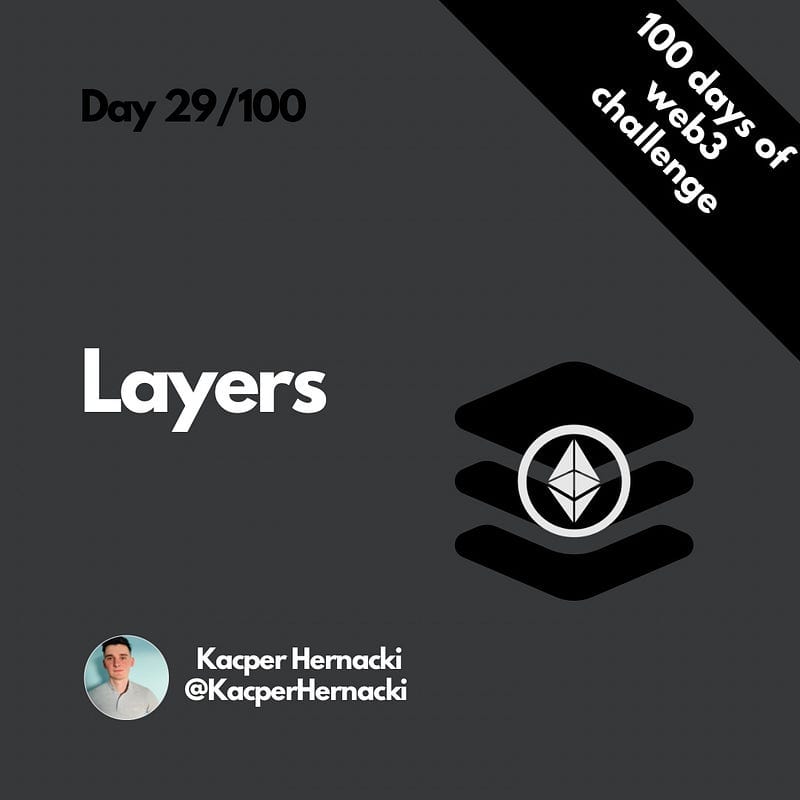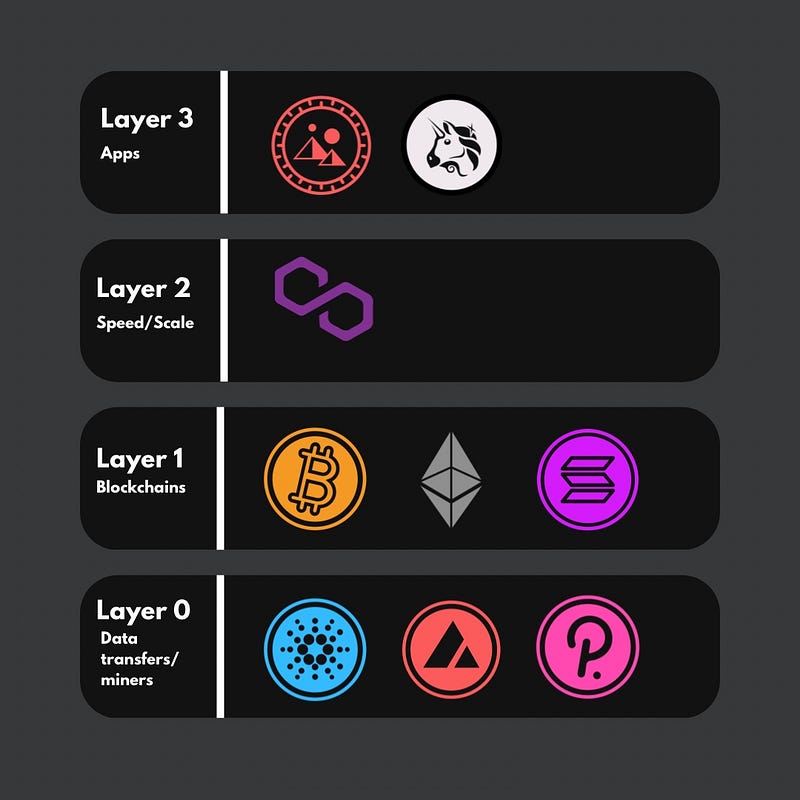Blockchain layers — How it improved the decentralized structure
Each passionate web3/blockchain developer should have heard about some kind of blockchain structure called layers.

Each passionate web3/blockchain developer should have heard about some kind of blockchain structure called layers.
What does it mean and how many layers are commonly implemented?
What each layer is responsible for?
Answers for these questions you will find in this material.
Agenda:
- Intro,
- Definition,
- Structure,
- Layer by layer description,
- Conclusion.
Definition
Blockchain layers are hierarchically ordered parts of blockchain architecture. They are described starting from layer zero to layer three — L0, L1, L2, L3.
Creating layers is essential for supplying high network security and scalability.
Structure

Blockchain layers are divided into four ones, each of them is responsible for some kind actions. Let’s go step by step, layer by layer:
Layer 0
Layer zero is the ground level, which defines the core: Internet, hardware and connections with layer one chains like Bitcoin and ethereum.

Features:
- Infrastructure for developers: devs do not need to start building blockchain from scratch, layer zero allows to easy build ecosystems.
- - Cheap and fast transactions: result is faster and cheaper on cross-chain transactions. Layer zero allows it by connecting networks.
- - Interacting with other networks: It allows to cooperate on chains using the same ground layer zero.
Layer 1

This layer proceeds blockchains like bitcoin and ethereum. It means that this is a place where transactions are made and consensus model is defined.
Layer 2

Layer two is third party integrations which are used in conjunction level to increase scalability and speed. One of the most famous example is polygon network with native coin — Matic.
Layer 3

Layer three is responsible for all dapps created on different ecosystems. Basically it is the overall UI which users interact.
Conclusion
Blockchain layers are extremely important and crucial for functional and super friendly chains. Developing them on big scale made decentralization much prosperous with incredibly huge potential.




